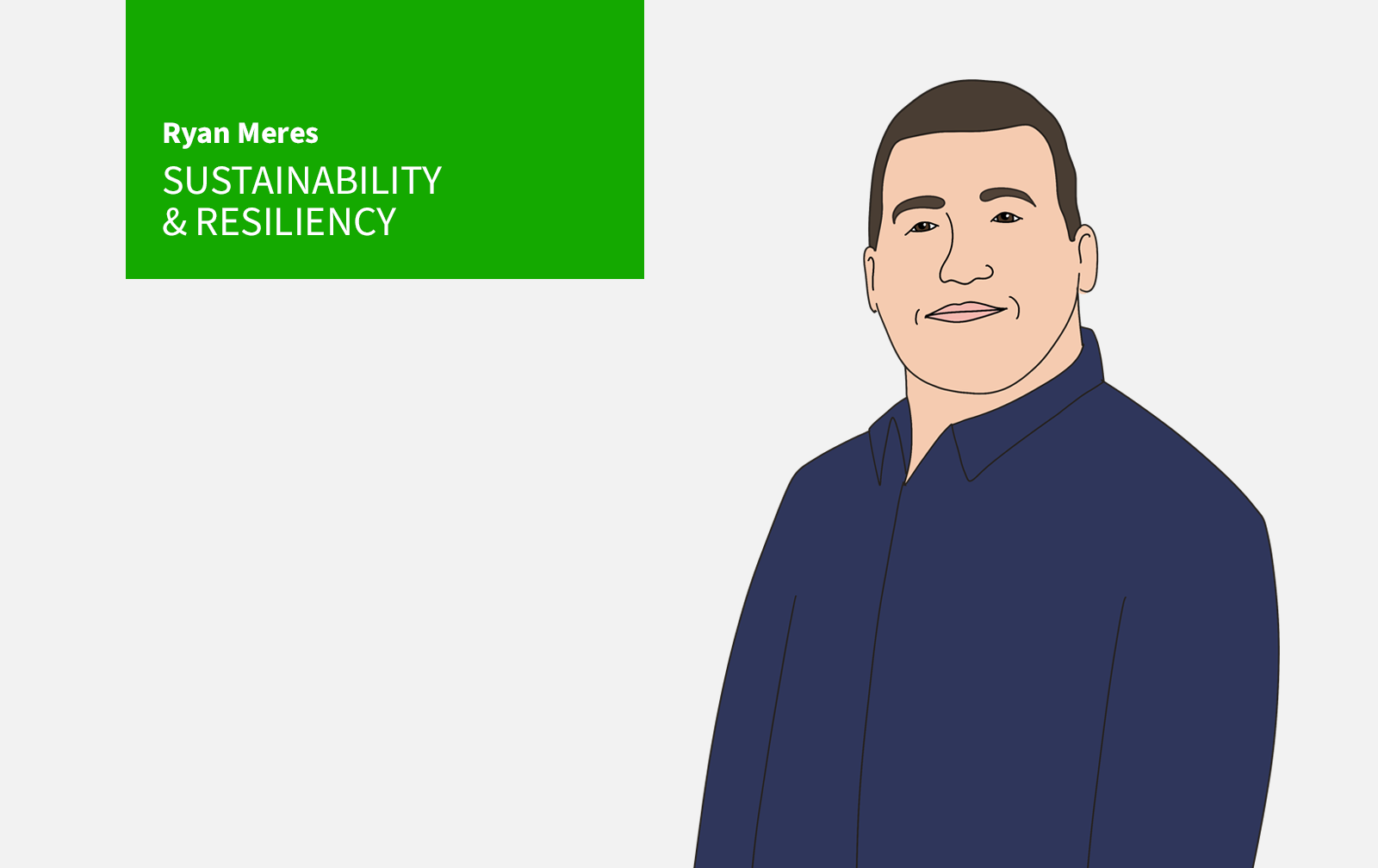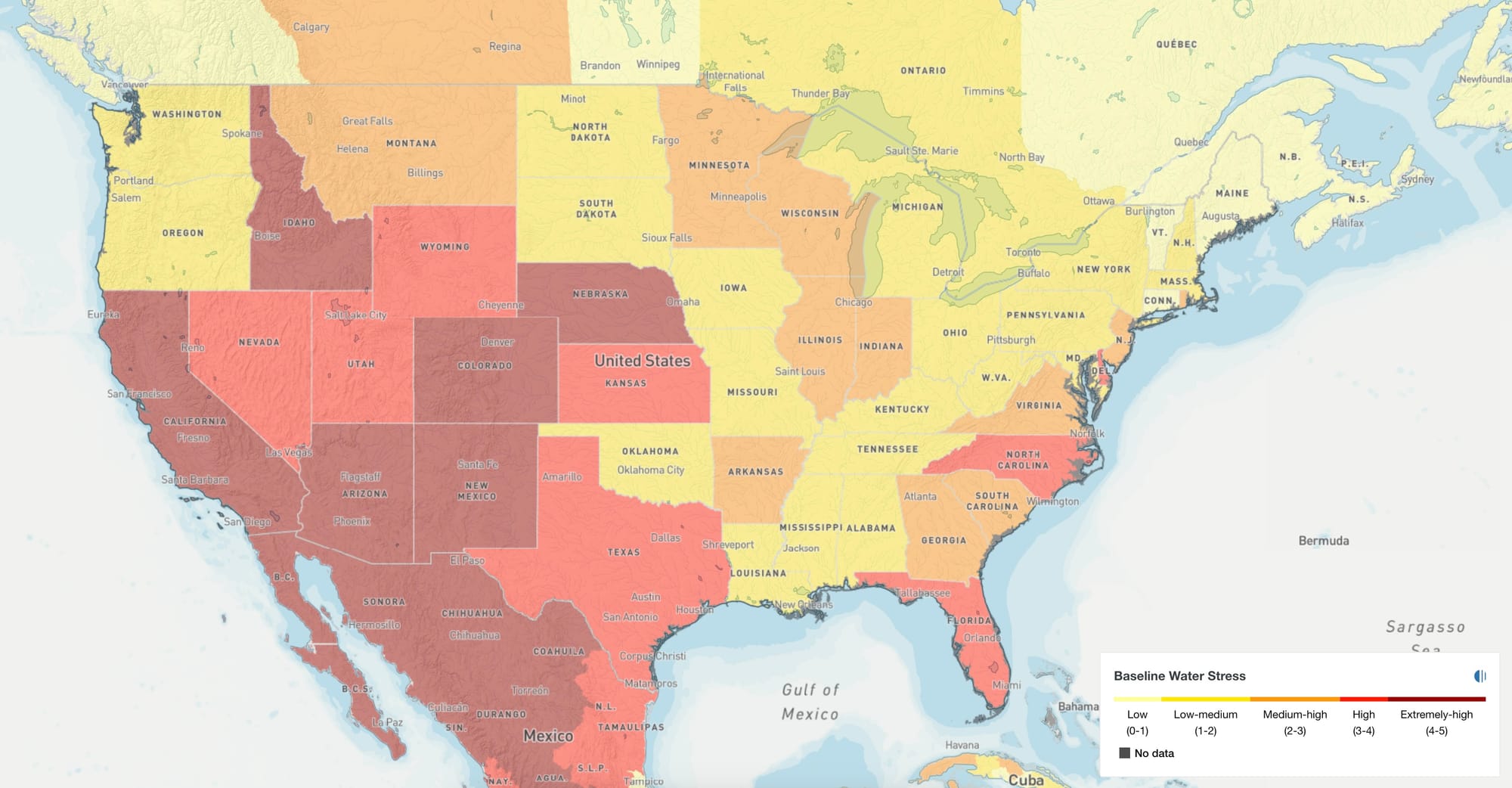Land
A Majority Of New-Home Markets Are Water Stressed
Addressing both outdoor and indoor water use in new construction will be key to reducing the stress on U.S. water resources. Here are some strategies for homebuilders to achieve more efficient water use.

According to the World Resources Institute, 25 of 50 states in the continental U.S. are under medium-high to extremely high levels of water stress. Putting more pressure on the already-strained water resources is that 41 of the 50 hottest markets for new-home construction are in these areas.

Many of the country’s leading homebuilders have been focused on making their homes more energy efficient for nearly two decades—often incentivized by federal, state and local programs—but less attention has been paid to water efficiency. Historic droughts over the past few years have stoked fears and even led to moratoriums on building permits, but those fears seem to wash away with the next rainstorm. Solar, wind, and conventional energy sources can be built to meet higher energy demands, but new water resources are harder, and often much more expensive, to come by.
Addressing The Pain Points
When the national model energy codes and energy efficiency programs like Energy Star for New Homes began to influence energy-efficient construction practices, there were many pain points. Among them were properly sealing ductwork, air sealing the building envelope, and properly installing insulation. The building trades needed to adjust to meet these new building practices, but the low-hanging fruit—like buying more efficient windows and heating and cooling equipment—was easier to do.
Achieving water efficient new homes will be no different. Many builders are already installing WaterSense-labeled fixtures and toilets and efficient dishwashers. Those efforts are the low-hanging fruit. The pain points will come when builders realize they need to address outdoor water use, primarily landscaping and irrigation. Just as HVAC and insulation trades needed to adjust to new energy efficiency practices, so, too, will landscape and irrigation trades.
According to the U.S. Environmental Protection Agency, 30% of the average American household’s water consumption is devoted to outdoor use. This amount can more than double for hotter, dryer climates. Addressing both outdoor and indoor water use in new construction will be key to reducing the stress on U.S. water resources.
The WaterSense Label For Homes
The EPA launched the WaterSense label for homes program in 2009 with the goal of improving the water efficiency of new homes. Like Energy Star certification, it has evolved from a largely prescriptive program to one based on performance. In January 2022, version two of WaterSense-labeled homes took effect, and it became a performance-based program.
One way to achieve the WaterSense label for homes is through RESNET’s HERSH2O, whole-house water efficiency rating. Based on a scale from 0-100, where a lower score means less water consumption, the rating system considers both indoor and outdoor water uses.
To achieve the WaterSense label using HERSH2O, a home must receive a score of 70 or less; have no visible leaks; use WaterSense-labeled toilets, showerheads, and bathroom faucets; be verified by a WaterSense Home Verifier; and be submitted to RESNET for final certification.
In 2023, more than 4,000 homes received a WaterSense label through RESNET. Although the number of homes more than doubled since 2022, it’s still far less than the 360,000 new homes receiving a HERS Index Score for energy efficiency last year. RESNET staff analyzed the data from nearly 6,000 WaterSense-labeled homes as well as feedback from builders and WaterSense home verifiers to determine the pain points to achieving the WaterSense certification.

Achieving WaterSense Certification
In 2023, 99% of WaterSense-labeled homes submitted to the RESNET registry were in California, Nevada, and Arizona. This isn’t surprising for a couple of reasons: one is that these states have had historic droughts and on-going stress to their water supplies; the other is these states and individual municipalities therein have stringent water regulations. These regulations (and some incentives!) have forced homebuilders to address their outdoor water use.
Since these three states tend to be hot and dry, outdoor water use can account for up to 80% of a home’s overall water use. This means that even the most efficient indoor water efficiency practices will do little to move the needle on overall water consumption.
Why do WaterSense-labeled homes have a slower uptake in other states?
After reviewing the data and getting feedback from homebuilders and their raters, two key items stand out for why it’s harder to achieve the WaterSense label outside of these southwest markets:
- Landscaping and irrigation practices.
- Builders don’t typically install a clothes washer.
In the southwest, builders have instituted practices like the installation of drought tolerant/native plants and very efficient irrigation practices. They have also reduced their use of water-intensive turf grass.
Unfortunately, these practices have not percolated to other regions. It’s quite common for builders in all other regions to install turf grass on nearly every square foot of the lot that doesn’t have hardscaping. Often this grass is watered with above-ground spray irrigation.
When water-intensive landscaping practices are combined with the lack of installation of a clothes washer, it’s nearly impossible to achieve the WaterSense label. Although builders are not penalized for not installing the clothes washer, they are leaving water-saving potential on the table.
As the largest water-consuming appliance in the home, an efficient clothes washer can save about 5,000 gallons of water per year and help builders lower their HERSH2O score.
Strategies For Efficient Water Use
Since HERSH2O is a whole-house water efficiency rating, it’s important that builders have a comprehensive strategy for reducing water use. Here are a few key components to consider when trying to achieve a score of 70 or less to obtain the WaterSense label for homes:
The process for obtaining the WaterSense label is also important. For builders getting a HERS Rating on their homes, it’s quite simple. The HERS rater will need to be a certified HERSH2O rater (aka WaterSense home verifier), and they will complete the WaterSense inspection during the HERS final inspection. The home is also modeled in calculation software to determine whether it meets the required score to be certified to WaterSense.
Closing Thoughts
Water is a life-sustaining resource. Builders committed to reducing their homes' impact on the environment and humanity must consider water efficiency paramount to their operations. Achieving the WaterSense label for homes will require new strategies and practices, but it demonstrates a builder’s commitment to ensuring water availability for future generations.
MORE IN Land
Why Smart Homebuilders Bet On Texas Single-Family Futures
The Builder's Daily contributor and land sage Scott Finfer makes the bullish case for Texas in 2025 — where fundamentals, patience, and long-term discipline still matter, and the housing market is hitting reset, not collapse.
Spring Land Slowdown Signals Deeper Strain For Homebuilders
A rare April dip in new home sales and starts — coupled with buyer hesitancy, incentives fatigue, and rising insurance costs — suggests deeper recalibration ahead for residential land strategy and valuation.
New Home–Landsea Deal Redraws Builder Power Map
A $1.2 billion private equity-backed merger creates a Top-25 national homebuilder — and signals four pivotal shifts redefining U.S. homebuilding's M&A battleground.
